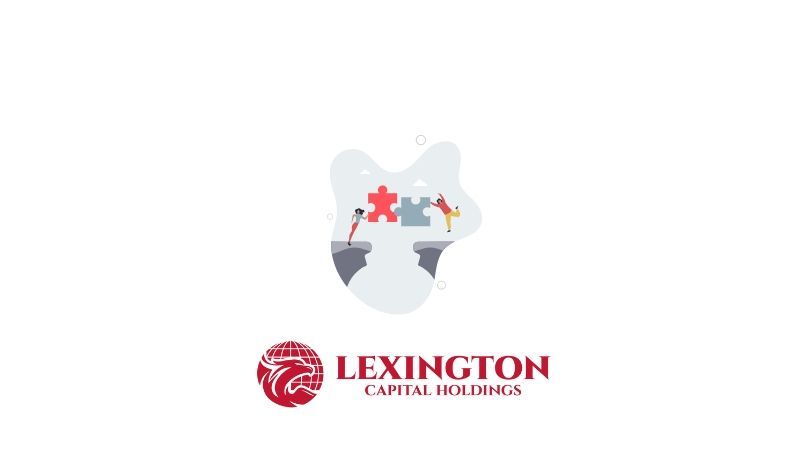The ABCs of Alternative Lending: A Guide for Business Owners
The ABCs of Alternative Lending: A Guide for Business Owners

In the labyrinth of business financing, alternative lending has emerged as a beacon of flexibility and accessibility for entrepreneurs. If you find the world of alternative lending a bit mystifying, fear not—this guide breaks down the basics, providing business owners with a comprehensive understanding of the benefits and considerations associated with alternative financing.
A is for Accessibility
One of the primary draws of alternative lending is its accessibility. Unlike traditional banks with stringent requirements, alternative lenders, exemplified by industry leaders like Lexington Capital Holdings, open the doors for a broader range of businesses. This inclusivity means that even those without a pristine credit history or substantial collateral can explore financing options tailored to their unique needs.
B is for Borrowing Options
Alternative lending offers a diverse array of borrowing options. From term loans and lines of credit to invoice financing and merchant cash advances, business owners can choose the financing instrument that aligns best with their objectives. This flexibility allows for a more customized approach, ensuring that businesses receive funding that suits their specific circumstances and growth plans.
C is for Convenience
Gone are the days of lengthy loan approval processes. Alternative lending excels in providing quick and convenient solutions. With streamlined digital platforms and efficient approval mechanisms, businesses can access the capital they need without enduring protracted waiting periods. This speed is particularly advantageous when seizing time-sensitive opportunities or addressing urgent financial needs.
The Benefits of Alternative Lending
1. Flexibility in Use of Funds
Alternative lending grants businesses the freedom to allocate funds where they are most needed. Whether for expansion, equipment purchase, or working capital, the flexibility of use empowers entrepreneurs to make strategic decisions aligned with their business goals.
2. Adaptable Repayment Structures
Unlike rigid repayment schedules associated with traditional loans, alternative lending often offers more adaptable repayment structures. This can include revenue-based repayments or daily/weekly installments, providing businesses with options that suit their cash flow patterns.
3. Accessibility to Small Businesses
Small businesses, often overlooked by traditional lenders, find a lifeline in alternative financing. This inclusivity is crucial for fostering entrepreneurship and supporting the growth of emerging enterprises.
Considerations Before Diving In
1. Cost of Capital
While alternative lending provides quick access to capital, it's essential to weigh the cost. Interest rates and fees can vary, so a thorough understanding of the total cost of capital is crucial to making informed financial decisions.
2. Reputation of the Lender
Research and due diligence are paramount. Investigate the reputation of the lending institution, considering factors such as transparency, customer reviews, and the lender's track record in delivering on its promises.
3. Understanding Terms and Conditions
Each financing option comes with its own set of terms and conditions. Business owners should carefully review these, seeking clarity on interest rates, repayment terms, and any potential fees.
In conclusion, alternative lending offers a promising avenue for businesses seeking financial support beyond the confines of traditional banking. By understanding the ABCs—Accessibility, Borrowing Options, and Convenience—business owners can navigate this landscape with confidence, leveraging the benefits while being mindful of crucial considerations. Whether you're a seasoned entrepreneur or a startup owner, alternative lending may well be the key to unlocking the financial support your business needs to thrive.

When you apply for business funding, your application goes through a critical stage—underwriting. This is where lenders evaluate risk and determine whether your business qualifies for financing, and under what terms. Understanding what underwriters look for can help you strengthen your application, avoid delays, and increase your approval odds.

Not every business enjoys a steady stream of income. For many companies—especially those in seasonal industries, contracting, or project-based work—revenue can shift dramatically from month to month. These ups and downs are normal, but they can make managing cash flow, payroll, and operating expenses challenging. At Lexington Capital Holdings, we understand that fluctuating revenue doesn’t mean instability—it just means you need the right financial tools to stay balanced and grow confidently.

The Challenge of Hyper-Growth For many startups, growth isn’t the problem—it’s managing it. Rapid scaling demands capital for hiring, marketing, technology, and operations. But too often, founders find themselves cash-strapped right when they need resources the most. Choosing the right financing strategy can be the difference between sustainable growth and burning out too soon.

When it comes to business financing, the terms you secure are just as important as the funding itself. Lower interest rates, flexible repayment schedules, and higher approval amounts can mean the difference between simply surviving and setting your business up to thrive. The good news? Business owners often have more negotiating power than they realize. At Lexington Capital Holdings, we’ve seen firsthand how preparation and strategy can help secure stronger terms. Here’s how you can do the same:

For many businesses, waiting on customer payments can feel like standing still when you’re ready to move forward. Delayed invoices, extended payment terms, or slow collections create cash flow gaps that make it harder to cover expenses, pay employees, or seize new opportunities. The truth is—even successful, profitable companies face this challenge. The key isn’t avoiding it, but managing it strategically with the right funding solutions

Securing business funding is a milestone—but the real impact comes from how you put that capital to work. Every dollar borrowed should fuel momentum, strengthen operations, and generate measurable returns. Unfortunately, too many businesses stop at “getting approved” and miss the chance to maximize their return on investment (ROI). At Lexington Capital Holdings, we believe funding isn’t just about access to capital—it’s about creating opportunity. Here’s how to ensure your financing delivers the highest ROI:

In today’s fast-paced business environment, standing out from the competition requires more than just great products and services—it takes strategy, timing, and smart financial decisions. One of the most overlooked tools in building and maintaining a competitive advantage is business financing. When leveraged correctly, financing doesn’t just help you “get by”; it can actually position your business to outpace competitors and capture new opportunities.

In business, surprises aren’t a matter of if—they’re a matter of when. Whether it’s a sudden equipment breakdown, an unexpected dip in sales, or a market shift that requires quick adaptation, unforeseen expenses can test even the most successful companies. The difference between thriving and struggling often comes down to how well you’ve prepared.

When most business owners hear the word debt, it sparks feelings of stress or risk. But here’s the truth—debt isn’t always a bad thing. In fact, when managed strategically, debt can become one of the most powerful tools to grow, stabilize, and scale your business. At Lexington Capital Holdings, we work with business owners every day who are navigating this very question: Is taking on debt the right move for me? Let’s break down the difference between “good” and “bad” debt so you can make informed financial decisions.

In today’s business world, financing options are everywhere—but choosing the right path can feel overwhelming. From traditional bank loans to alternative lending solutions, the fine print and fast-changing requirements often leave business owners spending more time deciphering funding terms than actually running their businesses. That’s where the value of a dedicated funding advisor truly shines. At Lexington Capital Holdings, we’ve seen firsthand how personalized guidance can transform the funding experience for business owners of all sizes.

